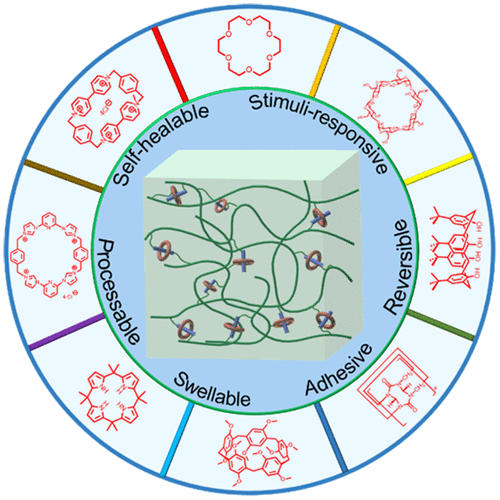

Covalent polymers connected by non-covalent interactions constitute a fascinating set of materials known as supramolecular polymer networks (SPNs). A key feature of SPNs is that the underlying covalent polymers endow the resulting self-assembled materials with features, such as structural and mechanical integrity, good processability, recyclability, stimuli-responsiveness, self-healing, and shape memory, that are not recapitulated in the case of classic covalent polymer systems. The unique nature of SPNs derives from the controlled marriage of traditional covalent polymers and macrocycle-based host–guest interactions. As a consequence, supramolecular polymeric networks have played important roles in a number of diverse fields, including polymer science, supramolecular chemistry, materials science, biomedical materials, and information storage technology. In this Review, we summarize advances made in the area of functional SPNs, with a focus on original literature reports appearing in the past five years. The treatment is organized according to the key macrocycle-based host–guest interactions used to produce various SPNs. The role of the underlying polymer backbones is also discussed.
